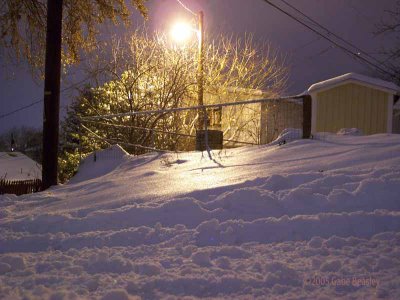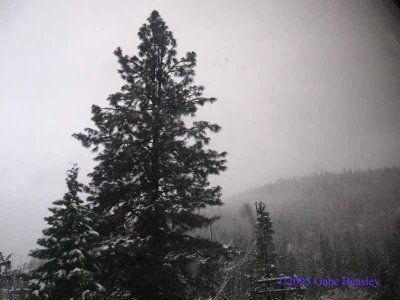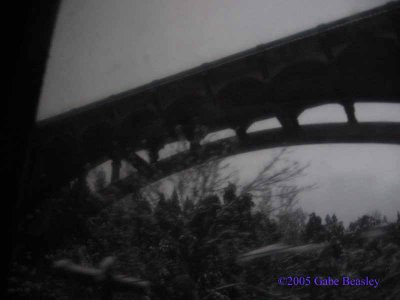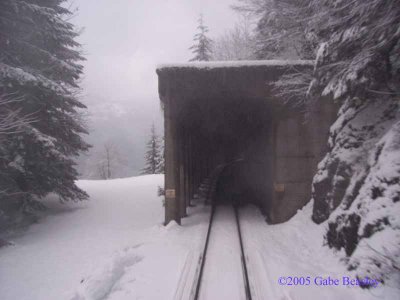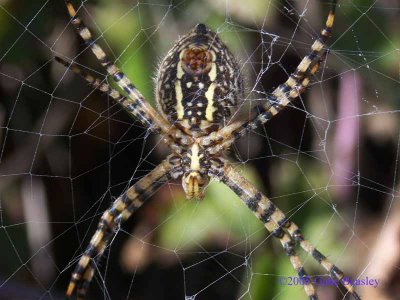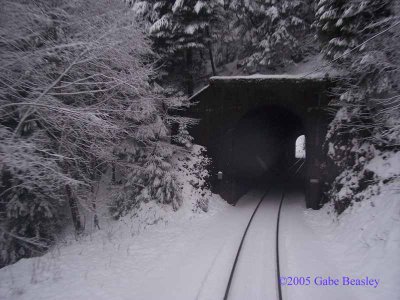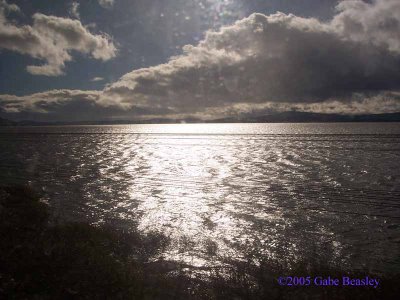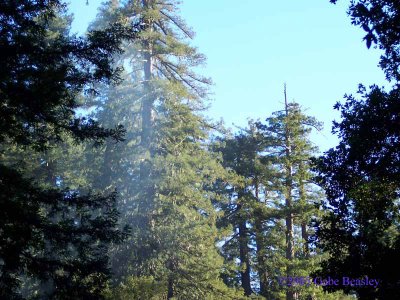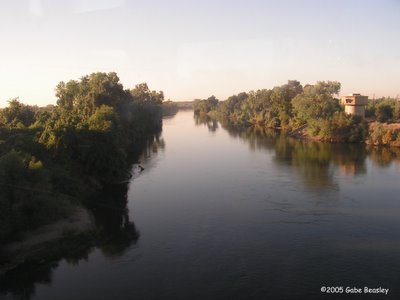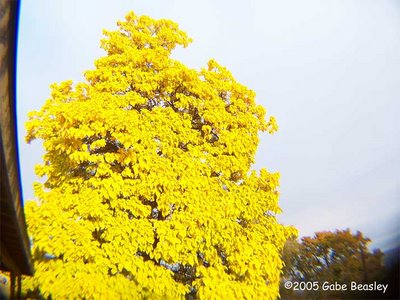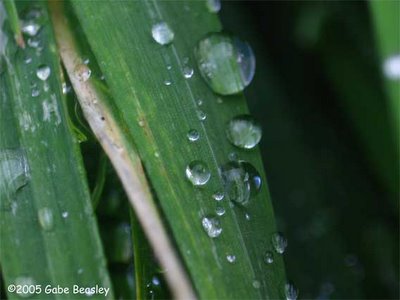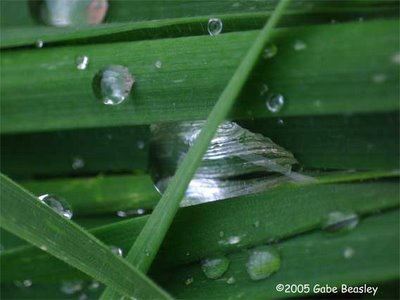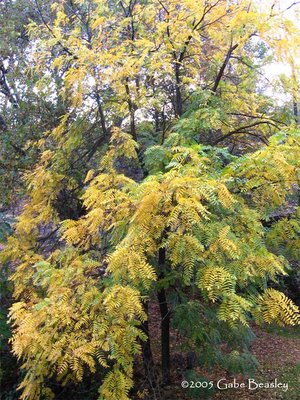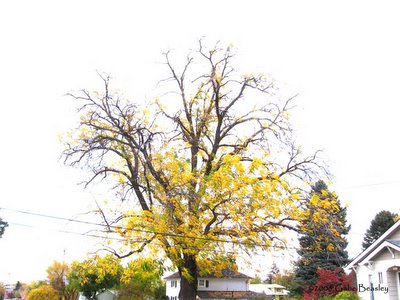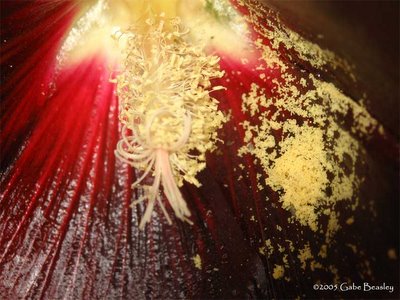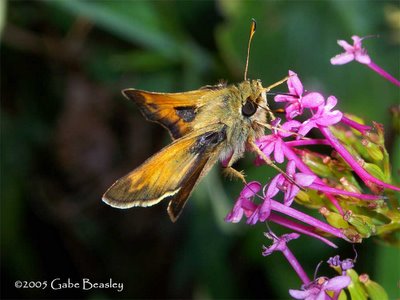
MOSTLY MACROS- A WORK IN PROGRESS
I have many articles that I posted quickly and did not edit. I am currently editing old articles and even sometimes adding new pictures to them to re-build my site so that the mistakes and errors can be corrected. Hopefully my efforts will be noticed! I have left my early posts a mess for a long time and this is probably one reason I don't get as much attention as I wanted to. I really did not know how bad the errors were! --G.Beasley 10/9/2011
HAPPY NEW YEARS-- I wish to thank everyone for your compliments and enthusiasm for my work and my website. As an amateur freelance photographer I am very glad to hear my work on this site is being seen and read. Forgive me if I don't always get back to questions or e-mails. I will generally get around to it when I have time. I like taking pictures more then spending the nearly hour per picture it takes to post them here. (when all is done) Anyway--check these out. Keep emails and comments coming-- I'd like to know more about anything so that my work and my name gets out there. I thank everyone who has sent me a comment and hope you all had a great Christmas. Questions, comments, are all welcome. Also don't forget--these pictures are for sale or use by certain public organizations--contact me about any of that.
I took this just before I left The Dalles--it was snowing like crazy here. That's one thing I really like about living here. This much does not happen every year, but it's allot of fun when it does. A couple years ago I did video sledding, before I got sick. Not a good idea for me now days.
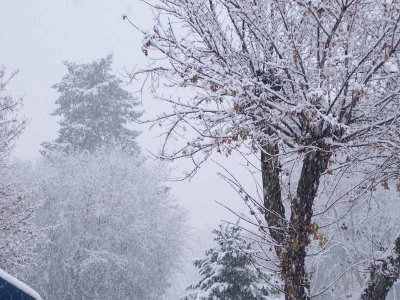 WINTER before I left--beautiful snow all over. We got over a foot here in The Dalles and it stuck around for a few days. I took A LOT of shots and will keep going through the 100s of pictures 35mm, 120 and digital pictures I took during the holidays. This was the most photogenic holiday season I've ever had. I had allot of fun and even got a wildlife lens (300mm) for my Pentax 35mm cameras. My mentor and uncle Ron Beasley I have to thank for this awesome lens. I'm in the market for a $25 spot-o-matic or Pentax lens SLR clone. If you live in The Dalles and have one that works--drop me an e-mail with a phone number and we can make an arrangement. That's a pretty good deal--the going price on used film SLRs is about $10 bucks to free. If I write the exact address those auto-programs will copy it and send me tons of junk mail. The "dot" is just a period and the AT is of course the @ sign.
WINTER before I left--beautiful snow all over. We got over a foot here in The Dalles and it stuck around for a few days. I took A LOT of shots and will keep going through the 100s of pictures 35mm, 120 and digital pictures I took during the holidays. This was the most photogenic holiday season I've ever had. I had allot of fun and even got a wildlife lens (300mm) for my Pentax 35mm cameras. My mentor and uncle Ron Beasley I have to thank for this awesome lens. I'm in the market for a $25 spot-o-matic or Pentax lens SLR clone. If you live in The Dalles and have one that works--drop me an e-mail with a phone number and we can make an arrangement. That's a pretty good deal--the going price on used film SLRs is about $10 bucks to free. If I write the exact address those auto-programs will copy it and send me tons of junk mail. The "dot" is just a period and the AT is of course the @ sign.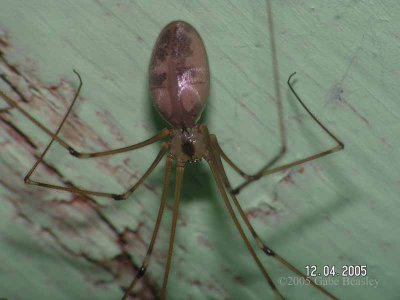 This is a female Pholcus phalangioides in my basement nearly ready to lay eggs. These were some of my first best macro shots taken with a 'point and shoot' 4mp camera. Outfitted of course with a home made macro lens specially attached and devised by me.
This is a female Pholcus phalangioides in my basement nearly ready to lay eggs. These were some of my first best macro shots taken with a 'point and shoot' 4mp camera. Outfitted of course with a home made macro lens specially attached and devised by me.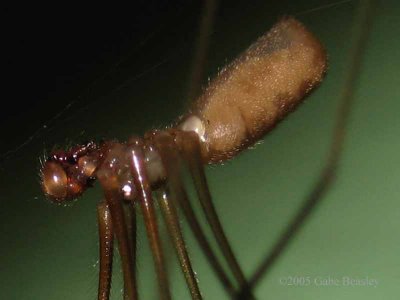 This is the male of the same species, commonly called the 'Daddy long legs'. You can see his enlarged palps which show that this is a male. This trait of "boxing glove" look to the front of all spiders shows that the spider is a male. Contrary to popular myths this does NOT mean they have more poisons and also--the Daddy long legs is NOT the most poison spider in the world by any degree. It is sad that many myths are proliferated about spiders. I have been looking for years and never found a single brown recluse in Oregon. Yet people keep claiming to be bit here. It is not likely they have any substantial populations here. I have met people who truely were bit by the brown recluse spider and seen there scars. The small marks that common species can sometimes make are no complaisant. Hysteria runs ramped and leads to the needless death of way to many species.
This is the male of the same species, commonly called the 'Daddy long legs'. You can see his enlarged palps which show that this is a male. This trait of "boxing glove" look to the front of all spiders shows that the spider is a male. Contrary to popular myths this does NOT mean they have more poisons and also--the Daddy long legs is NOT the most poison spider in the world by any degree. It is sad that many myths are proliferated about spiders. I have been looking for years and never found a single brown recluse in Oregon. Yet people keep claiming to be bit here. It is not likely they have any substantial populations here. I have met people who truely were bit by the brown recluse spider and seen there scars. The small marks that common species can sometimes make are no complaisant. Hysteria runs ramped and leads to the needless death of way to many species.Life also goes on in my basement. I plan to write a story about this and the extra-ordinary finds I made about in-door spiders. We need them. The safe ones such as the daddy long legs play a key roll in keeping harmful insects frightening ones such as ear-wigs and furniture eating beetles away from your home. I have the pictures of their webs to prove it. An article for another time.

If my grandma said she could grow a money tree--or a new digital camera--I would believe it. Most all of the flower pictures on my website are hers. She should have her own website but is just not all that interested in computers. My uncle and I do it for her. Despite the cold weather outside and recent snow--her garden patio is climate controlled and she can grow or bloom almost anything. I've never been too interested in flower shots or plants--but I gained a fascination with the complex patterns that flowers have to attract the insects that pollinate them. Some are so selective that only one species of insect can fertilize another flower. The chain of life is fragile. We must continue to increase ways to live on Earth without destroying nature. Other pictures of her flowers are back under "all pictures"
 Another Orchid grown by my grandma Beasley in 2005.
Another Orchid grown by my grandma Beasley in 2005. And so finally I'm getting home heading towards The Dalles. I was heading past at 60+Mph when I snapped this picture. I only had one chance and got lucky this time to get one of the many incredible falls in the Columbia gorge. I had a great time with my family and enjoyed that very much. Getting home I was able to finally start processing the 100s of holiday pictures I took from several 120 frames to 100s of digital shots. Finally I'm getting some film back tomorrow or so.
And so finally I'm getting home heading towards The Dalles. I was heading past at 60+Mph when I snapped this picture. I only had one chance and got lucky this time to get one of the many incredible falls in the Columbia gorge. I had a great time with my family and enjoyed that very much. Getting home I was able to finally start processing the 100s of holiday pictures I took from several 120 frames to 100s of digital shots. Finally I'm getting some film back tomorrow or so.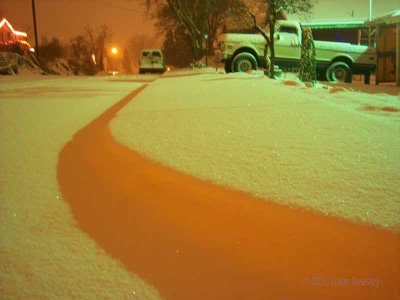 I took this a few weeks ago when I had a foot of snow here which still lingers in some small piles. I went out late at night in the VERY COLD air and shot a large number of long exposures. I'm still going through allot of them. Walking for blocks I looked for some of the nice places to catch snow. I have more of these snow and Christmas light shots I wish to share. All of them were taken at 6.1mp res. I took most of them at 200ISO around 1/4 with a mini-tripod.
I took this a few weeks ago when I had a foot of snow here which still lingers in some small piles. I went out late at night in the VERY COLD air and shot a large number of long exposures. I'm still going through allot of them. Walking for blocks I looked for some of the nice places to catch snow. I have more of these snow and Christmas light shots I wish to share. All of them were taken at 6.1mp res. I took most of them at 200ISO around 1/4 with a mini-tripod.
And soon there were ice cycles on my house. Looking at them at macro I found them to be very full of "junk" from the roof and runoff. I won't ever eat an ice cycle again as I realize this material consists of a great deal of bird crap. I got more pictures of ice cycles and snow-bound plants but here are a couple I recently converted for my site.

I got two species stranded at my grandma's house. This juvenile crab spider. Because it is literally only one millimeter long the pictures I took of it were difficult. This is nearly microscopic image. The hairs being a highlight of this hunter which I found hatched too late in the year. My dad first found close by another juvenile spider, a jumping spider (below). It too was small. It is the same species on the graphic of my website. I think. It's to small yet to know. I let it go but as yet it will not leave to specimen jar I left outside open. Too cold. These late-hatched spiders are common but the rarely live. It is incredible there are any at all in frigid snow and temperatures. But these were found in Portland where it's a bit less harsh. Still, most of these late-hatch-lings probably die due to lack of food or cold.
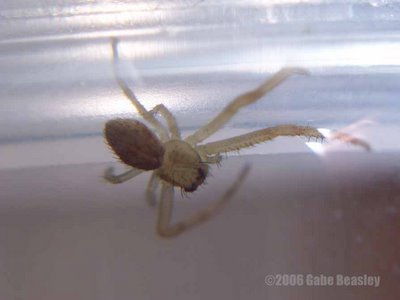 Although it is too late to ignore we have a special place in this world, no other animal has ever had. To respect even spiders we need only to recall our own brutality to ourselves and our own desperation's. We are a paradox-- humans are the most giving and compassionate species on Earth but they are also the most horrible and dangerous. Children need to learn from the beginning to respect the natural world. How important and fragile it is. This has never been more important. I've seen research on spiders. How kids react when spiders are shown to kids at different ages. It turns out that we probably have NO genetic disposition to fear spiders. Despite many people saying so. On the contrary, snakes provoke a reaction in small children. The fear of spiders is probably a learned thing engrained from childhood. And we use them to represent our greatest fears and darkest ideas. I often wonder why when we are so much worse if you know the facts. We should view them as they are--part the natural plan. And compared to most things dangerous-- almost harmless-- yet we continue to harm them, and in so doing, our selves. Many more people are struck by lightning every year then are bit by dangerous spiders. Using gloves while working the garden and keeping doors shut can eliminate most problems people have with spiders and there stinging/biting kin. Wasp and bee stings are almost always more dangerous--yet the spider still gets the brunt of our aggression. WHY?
Although it is too late to ignore we have a special place in this world, no other animal has ever had. To respect even spiders we need only to recall our own brutality to ourselves and our own desperation's. We are a paradox-- humans are the most giving and compassionate species on Earth but they are also the most horrible and dangerous. Children need to learn from the beginning to respect the natural world. How important and fragile it is. This has never been more important. I've seen research on spiders. How kids react when spiders are shown to kids at different ages. It turns out that we probably have NO genetic disposition to fear spiders. Despite many people saying so. On the contrary, snakes provoke a reaction in small children. The fear of spiders is probably a learned thing engrained from childhood. And we use them to represent our greatest fears and darkest ideas. I often wonder why when we are so much worse if you know the facts. We should view them as they are--part the natural plan. And compared to most things dangerous-- almost harmless-- yet we continue to harm them, and in so doing, our selves. Many more people are struck by lightning every year then are bit by dangerous spiders. Using gloves while working the garden and keeping doors shut can eliminate most problems people have with spiders and there stinging/biting kin. Wasp and bee stings are almost always more dangerous--yet the spider still gets the brunt of our aggression. WHY? A LYNX spider (Oxyopidae) --New photo added in 2011.
A LYNX spider (Oxyopidae) --New photo added in 2011.One of many harmless species often MISTAKEN for a brown recluse due to it's sometimes brown body and wondering nature. This spider is yet another garden dwelling species which is not considered dangerous to humans. I myself have been bit by one, it was again not even as bad as bee-sting. This one was found in a garden. The brown recluse has a specific look which can be seen on many websites. If you are trying to identify one you need to not only make sure of the body looks but count the eyes. They have 6 eyes only--and this is one of the critical means that they can be partially identified as there are not very many species of spiders with only six eyes. If you think you have a brown recluse--DON'T jump to conclusions--email me and I should be able to identify it for you. DIRECT EMAIL=mostlymacros@yahoo.com
 (Lynx spider) (Oxyopidae) Face on view--click on picture to see eyes in center of screen and use back arrow to return to site.
(Lynx spider) (Oxyopidae) Face on view--click on picture to see eyes in center of screen and use back arrow to return to site. BAD WEBSITE INFO ON SPIDERS
Treat all spiders with respect, but do not kill them just for the sake of fear. There is a disturbing trend of websites which show pictures of common local brownish spiders and calling them the "brown recluse" to attempt to get you to buy there product with scare tactics! This is false advertizing and WRONG. I have written one of these companies but they have yet to respond to my comment and willingness to provide them with a picture of a real brown recluse. THIS IS NOT A BROWN RECLUSE it is a common beneficial species important to the environment.
HONEY BEES AND SPIDERS --both VERY Important for HUMANITY
More people die of bee-stings each year then spiders. It turns out that the honey bees are dieing out due to new types of pesticides put into the crops and seeds as well as the use of mono-crop agriculture. This is what has caused honey bees to get (CCD) colony collapse disorder. When will we learn that pesticides are not the answerer to dealing with 'pests' and that we must live with the natural world? Poisons snakes, sharks, lighting, you are all more likely to die of that then you are of spider bites. No matter where you live. Yet the honey bee is hardly ever an object of fear and does not usually make our "skin crawl". Why? Because it is vital to our survival as humans obliviously, we do not fear it so? What we often don't realize is spiders are just as
important!
 A tiny trash spider (Cyclosa) (Probably in this case a Cyclosa conica)
A tiny trash spider (Cyclosa) (Probably in this case a Cyclosa conica)A serious mosquito eater of the Northwestern forests and many other places.
It is a known scientific yet hard to believe fact that if all spiders were to suddenly largely die off, I don't think humans would last more then about a decade or two. Insects and there diseases would be as big a crisis if not worse then fears of the loss of pollinators like honey bees. Some scientists have calculated that if all spider species were decimated, we would literally be knee deep in insects! And even moreover, cannibalization is not nearly as common in the spider world as most people think. Many species as my recent pics show can get along and reproduce almost with a tenderness. Most species just mate and part ways. Several species actually commit suicide, and in only a few do the males become food for the females to provide extra protein so that she can lay her eggs. Most people have no idea that there are many spider species who live in communities that resemble those of many higher species.

(Above)
This was one small crab spider. I spotted it only because it was near the web of this larger jumping spider my dad pointed out above the table just before Christmas dinner. They were clearly headed for a fight together like this when I found them. One of them nearly had it's own version of Christmas dinner.
(Below)

IN A STAND OFF and or BLISSFULLY UNAWARE- Both spiders are hungry and clearly before I separated them they could have attacked each other for food and territory. The crab spider had found the jumping spider's silk hiding spot. It may not have detected the jumping spider inside--or this could have been a silk-coincidence- probably the hungry and powerfully equipped crab spider was ready to launch an attack on the jumper inside. Since they can release there
limbs at will (legs fall off under stress)--the fight's outcome is by no means certain. Both have a insect/spider-toxic venom. The flower spider probably has the most toxic. But what would have happened here I don't know. I honestly don't know enough about spider on spider attacks as they are rare to see in the wild and unlike some people I refuse to force them in captivity. One thing is clear--crab spiders can bring down bumble bees in flight that are almost four times as large as they are-- and dangerous. The crab spider (flower spider) despite it's small size is a formidable advisory. I doubt the jumper has any immunity to it's venom. This is a forced situation of hunger and not usual pray. We look down on spiders for such savagery. But as a species have we really been much better? Humans on the other hand, in many countries, eat the meat of Primates such as chimps. This is are closest living ancestor. Often this is called "bush meat". Same difference here I figure. I have been to many distant countries and seen the human realty as well as suffering on a terrible scale for myself. I think that it is what humankind does to itself and does not do to help all to often-- makes us the most dangerous, and violent species of animal there is. Yet we judge animals and even other races of humans as being "savage". You know, the latest evidence says that everyone alive today has 600 common ancestors. As hard as that is to believe, it seems a scientific fact. This shows how close we really are to each other and to me is further proof of why compassion and forgiveness--non-violence--should be the attitude for almost all situations. We may be destroying the natural world but we do have an innate ability to see past wrongs we do and others do to us with compassion. We are able to cooperate and somehow and achieve greatness. My favorite countries are the Buddhist ones and I myself have recently become more and more interested in Buddhism. I'm not a pessimist. Someday I hope we go to the stars when we have many things figured out here first. I have no doubt, spiders will find some way to hitch a ride with us.
 The daddy long legs--a male. One of the most beneficial and harmless spiders in the world.
The daddy long legs--a male. One of the most beneficial and harmless spiders in the world.
Spiders also have a strange caring side. One species I recently read about actually becomes the ultimate mother by committing suicide so that her young can eat her body. Now that is gross--but only one species I know of does it. Several species of male spiders commit suicide for the female by thrusting there abdomen into her fangs! Every time, on purpose to mate and in fact will not even start mating until they have forced there body into the females chrlicera! There is an estimated 35,000 species of spiders and only a very small number of them practice any kind of regular cannibalism. We like to demonize what we fear. Often for good reason. But if we are to survive in the long term we must admit our own history to ourselves and accept all species and there rights to this planet as well. I was absolutely shocked when I found out how cattle are treated. That they never see the light of day--everything is artificial--even sex--and is so discussing I can hardly eat beef. The treatment and slaughtering methods used on cattle and most other animals in western society is far more disgusting then any spider species could ever create or devise.
THE BLACK WIDDOW is a dangerous species. I have pictures in this site in other places as well as a video. Despite her reputation as being a killing widow, she does not have much choice in the matter. If she lets the male free, or he simply goes free, he will die in a matter of hours. Male black widdows are born without feeding organs, thus they live for one reason, to mate with the female and provide her with a meal. Yeah, it being a guy can really suck if your a spider. A great many species harmlessly lock jaws in a display that resmbles kissing to show submission and mate. Even if disterbed I've seen them come back together in what I can only call spider passion! Theres no agression, and little or no danger of a mate becoming a meal.

SPIDERS IN LOVE
Two 'money spiders' going at it! This lasted for as long as I had time to shoot. My camera scared them a couple of times and they broke up only to get back together and go at it again! Catching spiders mating in the wild is a rare thing I have only done twice.
 HAUNTED HOLIDAYS? ? You know those shows about ghosts on the Sci-fi channel and the Discovery channels and stuff? Well--here's a photographer's analysis of one of the biggest claims they make. I do believe a bit I guess, in ghosts (or something) for several reasons. Most of it however, is BUNK. The Lockness monster, Bigfoot & UFO abductions are things I have kept an open mind in but don't just believe in because. I'm an open-minded skeptic. I believe that people want to believe so much they miss the fact that they are playing tricks on themselves or having them played on. People love to play pranks or make wild claims about things that they have little or know knowledge of-- like photography-- in this case of so called "orbs". They are usually bugs but often snow or dust particles caught by a photo flash or bright lights are everywhere making them common in photos. I'm not sure where the term came from but it has NOTHING to do with spiders. This is a totally different subject here. My opinion of the un-explained is very skeptical. I usually respect believers. And I don't call people liars. I just know the mind can play funny tricks on you. My travels around the world to over 14 different countries has shown me lots of strange things, some of which I cannot explain. I fully think most people are being truthful about there experiences. It is often actually a trick of some kind or a condition of some kind that they don't understand or know about. An important note here--the picture below is COMPLETELY un-touched by any photo-editing program. I can see how these strange things that appear in pictures could be mistaken for supernatural effects by people who do not know the principles of optics and photography. Get educated before you make a claim about something!
HAUNTED HOLIDAYS? ? You know those shows about ghosts on the Sci-fi channel and the Discovery channels and stuff? Well--here's a photographer's analysis of one of the biggest claims they make. I do believe a bit I guess, in ghosts (or something) for several reasons. Most of it however, is BUNK. The Lockness monster, Bigfoot & UFO abductions are things I have kept an open mind in but don't just believe in because. I'm an open-minded skeptic. I believe that people want to believe so much they miss the fact that they are playing tricks on themselves or having them played on. People love to play pranks or make wild claims about things that they have little or know knowledge of-- like photography-- in this case of so called "orbs". They are usually bugs but often snow or dust particles caught by a photo flash or bright lights are everywhere making them common in photos. I'm not sure where the term came from but it has NOTHING to do with spiders. This is a totally different subject here. My opinion of the un-explained is very skeptical. I usually respect believers. And I don't call people liars. I just know the mind can play funny tricks on you. My travels around the world to over 14 different countries has shown me lots of strange things, some of which I cannot explain. I fully think most people are being truthful about there experiences. It is often actually a trick of some kind or a condition of some kind that they don't understand or know about. An important note here--the picture below is COMPLETELY un-touched by any photo-editing program. I can see how these strange things that appear in pictures could be mistaken for supernatural effects by people who do not know the principles of optics and photography. Get educated before you make a claim about something!
CLICK ON PICTURE FOR LARGER VIEW
I pick up "orbs" on film and digital all the time. Sometimes they are even a nuisance. My video camera in night-vision mode gets them as well when dust particles move around a dark room. As a serious amateur photographer---I know exactly what they are and see them in places you would never think to be "haunted". In fact they are quite easy to make on purpose. Particles, sometimes in the air as dust (in this case small snow flakes out of focus) and sometimes on the lens when the cameras depth of field is right. Either that--or this shot in my neighbors yard is one of the most haunted spots in the world!!!!
HOW TO GET SNOWFLAKES IN YOUR PICTURE
You might want to know how to take pictures of snowflakes. It's VERY easy--even though your flash is useless when taking landscapes or large pictures--it is still good for real close up stuff in it's effective radius both at night and during the day. That includes snow. So as in this picture- a semi-long exposure shot (1/4th-1/15th) a second is added with 1 foreground flash that catches the snowflakes. Most point and shoot cameras have a 'flash always on' mode. This is marked with a lightning bolt. Just turn it on and use normal settings and you will see them. For DSLRs Just turn your flash on and keep your manual settings the same as if you were shooting the trees, house or lights you wanted to get and lock the focus and fire the flash! Also set your f-stop auto or how you want it (larger setting the less your flash will illuminate but the more flakes you may see). I have several shots I've not published yet taken in daylight of snow and as long as it's snowing ok--you can catch the flakes. Basically, you just set your flash to fire when the camera says it's not needed during the day. It will catch the flakes. Happy new years.




